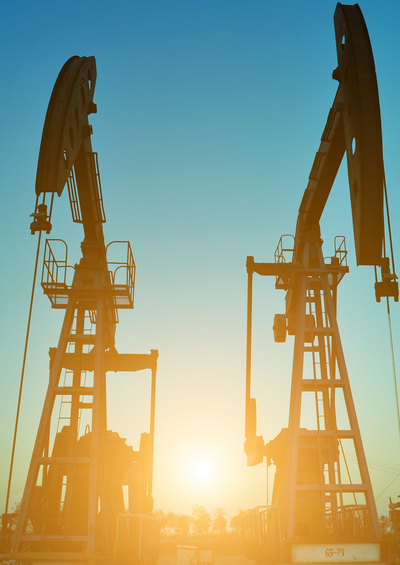Bad News from the Global Oil Market
Trump’s tweet-based badgering of the Saudis to increase production will not ease pressures resting on the global oil market. High time to do a reality check.
July 16, 2018

Trump’s tweets badgering the Saudis to ramp up their oil production are troublesome, especially in view of the underlying dynamics at work in global energy markets.
If the presidential “advice” by Twitter were heeded, this could very well achieve the opposite of what Mr. Trump intends to accomplish. It could set the base for still more upward pressure on world energy prices.
If the Saudis are cajoled into driving production to beyond the prudent limits of their capacity now that will create conditions which over time will become more problematic, at least as far as consumers are concerned.
A reality check
Venezuela, the country with the world’s largest reserves, today is producing less oil than it did back in 1945!
Yet, at the very moment that Venezuela’s oil output is crashing, the United States is fixated on pushing Iran and its 3.7 million barrels daily production out of the international oil market. It makes no sense.
This move is bound to increase pressure on the supply side. China, Russia, India, Europe — everyone can do the math. Everyone but the hapless American government and her Tweeter-in-Chief, that is.
In addition to these powerful pressures which are leading prices higher, there are deeper forces at work on the supply side of the market, mainly as a result of the vast reduction in investment in the oil sector over the past three years.
The picture which emerges is disturbing for all consumers of oil globally. The reality is that structural supply/demand imbalance now building in the market is set to become even more precarious. The U.S. government answer is astonishingly simple and short-minded: Increase production and do it now!
If the Saudis crack in response to Trump’s tweets, and decide to push production beyond prudent limits, this begets us a big problem: Very little excess capacity will remain in the system to absorb any oil supply shock in the period ahead. But we know that shocks always happen in energy markets.
The Trump-Putin summit
It is against this background that energy markets are a core issue discussed during the Putin-Trump summit in Helsinki today.
Global demand for crude oil continues to build at a rate of 2-2.5% a year. On this trend, world oil consumption will run to 104 million barrels/day by the end of 2020.
The crash of crude oil prices during the 2015-2016 panic led to an across the board slashing of capital investment across the entire energy sector. Even maintenance investment was chopped.
As a result, the average rate of natural depletion of oil wells around the world is now running, in my view, at 7-8% a year, a full 2-3% higher than the long-term average.
What does that mean?
It means that the world must currently increase annual production by about 10% — that is 2-2.5% for the growth in consumption and the needed replacement of 7-8% to offset the rate of natural depletion.
Raising oil production by 10% a year is a giant undertaking. That’s equivalent of adding a new Saudi Arabia, a new Russia, or another United States in new production capacity to the oil market each year, simply to keep demand and supply in balance.
That simply cannot happen without a massive surge in investment. However, there is no sign at all that that is happening or about to happen. Even if it did, with the exception of shale, which is still a tiny part of total world production, the lead time for bringing new production from scratch onto the market is 5-7 years.
As if all of this was not sobering enough, one needs to factor into the equation the infrastructure shortages which exist in many oil-producing areas.
For example, infrastructure shortages continue to cripple Canada’s capacity to put oil into the international market. Further development of the proliferate Permian play in Texas is now blocked due pipeline bottlenecks.
Interestingly, the dynamics now at work in the oil market are very supportive of coal prices, which remains the world’s largest source of energy. Environmentalists must be pleased!
Effects of a global recession
What if we factor into the equation a great global recession? Would that reduce demand enough to steady prices over the mid-term?
If the next recession were, say, as harsh as the what the world experienced after the Bush Bubble popped in 2006-2008, when the imploding U.S. economy triggered a vicious global recession, it would reduce demand by as much as 4% per year for 2-3 years.
Of course that would have an impact, but it would still mean the world would need 5-6% annual increases in oil production in the mid-term to keep demand and supply in balance.
These are the fundamental dynamics at play today in global energy markets. Over the longer term, there will be all kinds of new developments.
For example, the cost of renewables will likely continue to fall, more efficient energy storage technology may be developed, efforts to increase energy efficiency will likely progress, China is set become dramatically more effective in saving energy, there will be more widespread use of natural gas, more electric cars will enter use etc.
But none of these developments will have any substantial impact on energy markets between now and say the end of 2020.
During that period, demand is set to run ahead of supply. That means higher prices for consumers. The risk of even higher prices will become still higher if the Saudis bow now to the whims of the United States.
Takeaways
Trump’s tweet-based badgering of the Saudis to increase production will not ease pressures resting on the global oil market. It is high time to do a reality check.
If the Saudis are cajoled into driving production to beyond the prudent limits of their capacity it will create problematic conditions -- at least as far as consumers are concerned.
Global demand for crude oil continues to build at a rate of 2-2.5% a year. On this trend, world oil consumption will run to 104 million barrels/day by the end of 2020.
Over the longer term, there will be all kinds of developments in global energy markets -- falling cost of renewable energy sources, more widespread use of natural gas and more electric cars.
